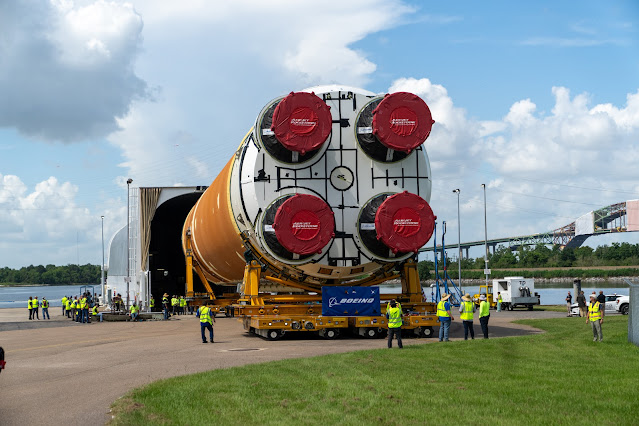NASA Artemis II Moon Rocket Core Stage Loaded onto Pegasus Barge
The core stage for the SLS mega rocket is the largest stage NASA has ever produced. At 212 feet tall, the stage consists of five major elements, including two huge propellant tanks that collectively hold more than 733,000 gallons of super chilled liquid propellant to feed four RS-25 engines at its base. During launch and flight, the stage will operate for just over eight minutes, producing more than 2 million pounds of thrust to help send a crew of four astronauts inside NASA’s Orion spacecraft onward to the Moon. All the major structures for every SLS core stage are fully manufactured at NASA Michoud.
NASA is working to land the first woman, first person of color, and its first international partner astronaut on the Moon under Artemis. SLS is part of NASA’s backbone for deep space exploration, along with the Orion spacecraft and Gateway in orbit around the Moon and commercial human landing systems, next-generation space, next-generational spacesuits, and rovers on the lunar surface. SLS is the only rocket that can send Orion, astronauts, and supplies to the Moon in a single launch.
Check the NASA Artemis II Mission page for updates:
https://www.nasa.gov/mission/artemis-ii/
For more information about SLS, visit:
Image Credit: NASA/Steven Seipel
Image Date: July 16, 2024
#NASA #ESA #CSA #Space #Moon #ArtemisProgram #ArtemisIIMission #ArtemisII #SLS #SLSCoreStage #PegasusBarge #DeepSpace #Astronauts #MoonToMars #SpaceExploration #HumanSpaceflight #NASAMichoud #NewOrleans #Louisiana #UnitedStates #Canada #Europe #STEM #Education








.webp)





















.webp)

